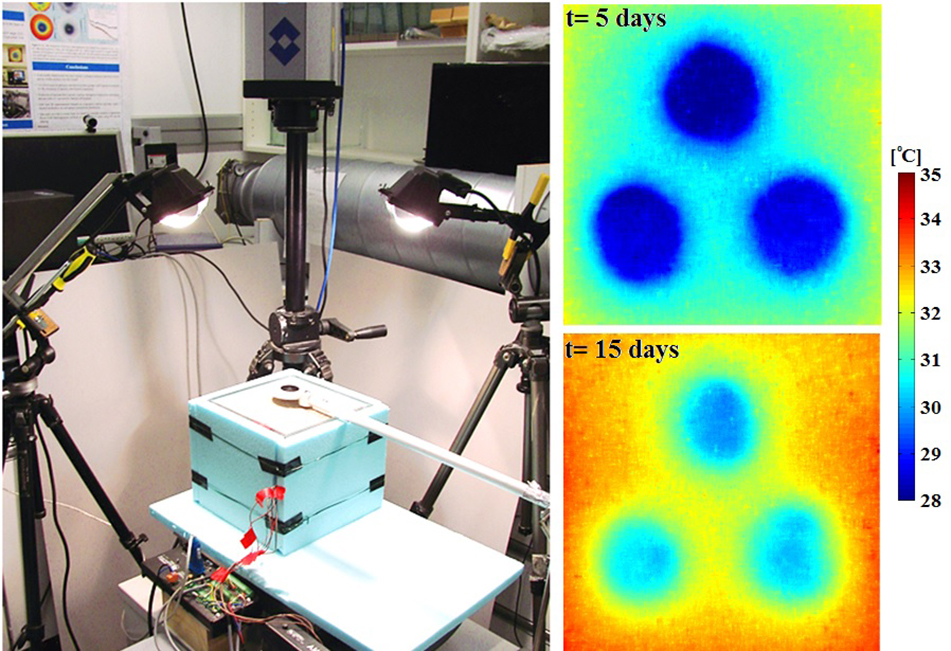Dynamics of surface temperature and energy partitioning over drying porous surfaces
The partitioning of incoming shortwave radiative energy on evaporative surfaces determines mass and energy exchange with the atmosphere, and influences measurements of various climatic and hydrologic processes. The evaporative drying of porous surfaces contains the coupling between heat and mass transfer processes and depends on porous media transport properties, evaporative demand of the air and vapor transport dynamics between the surface and air mass.
The study considers the coupling between heat and mass transfer processes at the surfaces of evaporating porous media. A pore scale analytical approach has been developed to quantify the coupled evaporation rate and surface temperature dynamics during surface drying. The model was upscaled and used for investigating the energy partitioning at the surface and linking pore scale phenomena with landscape processes. We employ infrared thermography with high spatial and temporal resolutions to observe surface thermal signatures during gradual surface drying. Results of this study provide new theoretical and experimental tools for predicting the presently empirical coefficients used for conversion of remotely-sensed thermal information to estimation of fluxes from terrestrial surfaces.

Team: Dani Or, Peter Lehmann, Milad Aminzadeh
Funding: Swiss National Science Foundation
Students: Milad Aminzadeh
Contact: